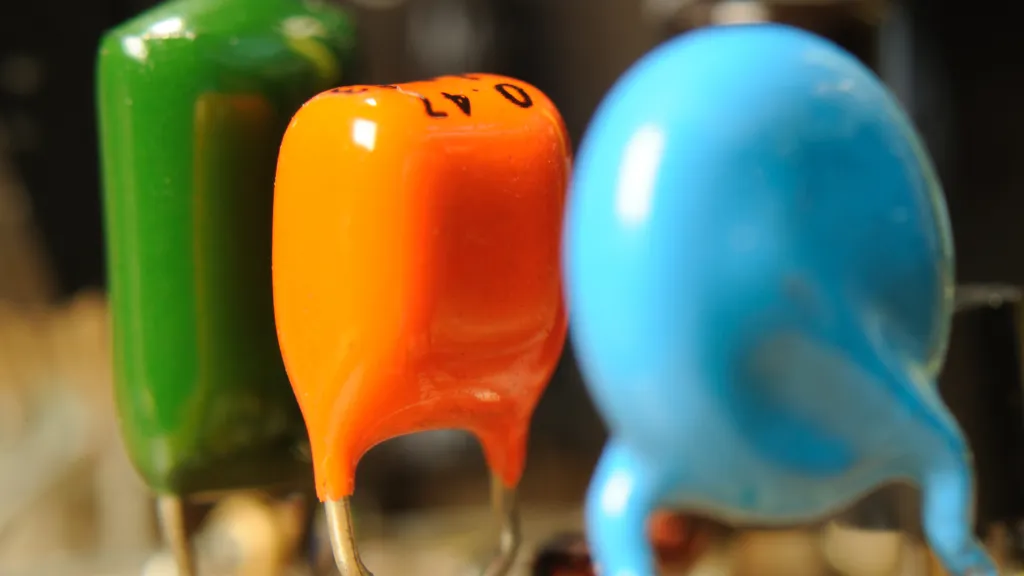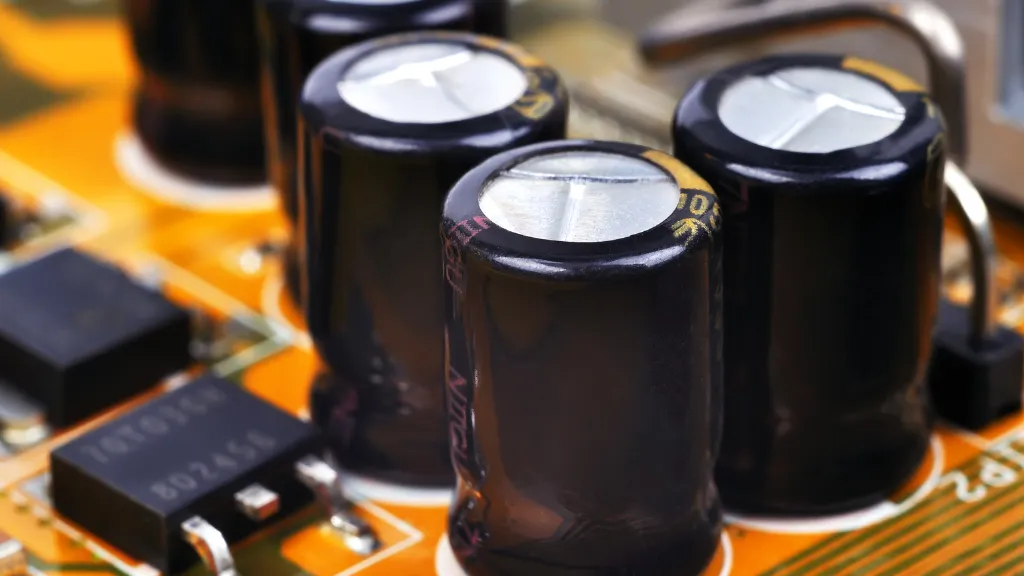Y Capacitor: The Comprehensive Guide
In the intricate world of electronics, capacitors play a pivotal role; among them, Y Capacitors hold a special place. These components are not just another type of capacitor; they are integral in ensuring the safety and efficiency of electronic devices.
This article delves into what Y Capacitors are, their unique characteristics, and their crucial roles in modern electronics.
Understanding Y Capacitors
Y Capacitors, also known as Y-Class Capacitors, are a specialized type of capacitor used extensively in electronic circuits for safety and noise suppression. Their unique characteristics and construction set them apart from other capacitors, making them essential to many electronic devices.
Physical Description and Construction
Y Capacitors are typically small but built to withstand significant electrical stress. They are designed to connect line (phase) to ground or neutral to ground in an electrical system.
This positioning is critical for their function in filtering and safety. The construction of Y Capacitors is focused on durability and reliability.
They often use materials like ceramics or metalized film, which offer excellent electrical properties and stability under various environmental conditions. The choice of material also influences the capacitor’s ability to handle high temperatures and electrical transients.

Types of Materials Used
The materials used in constructing Y Capacitors are selected based on their dielectric properties. Ceramic Y Capacitors are common due to their high dielectric constant, stability, and reliability.
Metalized film capacitors, another popular choice, offer self-healing properties and lower inductance advantages. These materials ensure the capacitors can operate effectively under high voltage conditions and provide stable capacitance over a wide temperature range.
Differentiating Y Capacitors from Other Capacitors
Y Capacitors are distinct from other types of capacitors in several ways:
- Safety Certification: Unlike regular capacitors, Y Capacitors are specifically designed for direct connection to the main supply and must comply with stringent safety standards. They are categorized into classes (Y1, Y2, Y3, etc.) based on their rated voltage and ability to withstand impulse voltages.
- Application: Y Capacitors are primarily used for noise suppression and EMI filtering in AC line applications. This contrasts with other capacitors that might be used for energy storage, timing, or tuning circuits.
- Construction and Tolerance: These capacitors are built to have a higher tolerance to electrical stresses such as voltage spikes and surges. Their robust construction ensures they do not fail catastrophically, a crucial aspect of their safety features.
- Electrical Characteristics: Y Capacitors have unique electrical characteristics suited to their role in filtering high-frequency interference. They provide a low impedance path to the ground, essential for effective noise suppression.
The Functionality of Y Capacitors
Y Capacitors are crucial in electronic circuits, primarily focusing on safety and noise suppression. Understanding their functionality involves delving into their electrical characteristics and how they contribute to electronic devices’ overall performance and safety.
Electrical Characteristics and Properties
- High Voltage Endurance: Y Capacitors are designed to withstand high voltage levels, making them suitable for direct connection to mains electricity. This capability is crucial for applications involving fluctuating voltages and spikes.
- Low Impedance Path for High-Frequency Noise: One of the key functions of Y Capacitors is to provide a low impedance path to ground for high-frequency noise. This characteristic is vital in filtering out electromagnetic interference (EMI) and radio frequency interference (RFI) from the power supply, which can otherwise disrupt the performance of electronic circuits.
- Stability Across a Range of Conditions: These capacitors maintain their capacitance relatively consistently across various environmental conditions, including temperature changes. This stability is essential for reliable operation in various applications.
Role in Filtering and Noise Reduction
Y Capacitors are integral in filtering applications. They are connected in a way that allows them to shunt unwanted high-frequency signals to ground, thereby cleaning the power supply and signal lines from noise.
This function is critical in applications where precision and accuracy are paramount, such as in medical equipment, sensitive measuring instruments, and communication devices.
Managing EMI (Electromagnetic Interference)
- EMI Suppression: Y Capacitors effectively suppress EMI, which can be generated by various sources, including industrial machinery, wireless signals, and even electronic devices. By filtering out EMI, these capacitors help comply with regulatory standards for electromagnetic compatibility (EMC).
- Safety Aspect: In addition to their role in performance, Y Capacitors also contribute to the safety of electronic devices. By managing EMI, they prevent it from causing malfunctions or failures in critical components of the device, which could lead to safety hazards.
- Enhancing Device Longevity and Reliability: By protecting electronic circuits from EMI and other high-frequency interferences, Y Capacitors indirectly enhance the longevity and reliability of the devices. This protection is critical in environments with high levels of electrical noise.
Applications of Y Capacitors
Y Capacitors, with their unique characteristics and safety features, find applications in a wide array of electronic devices and systems. Their primary role in these applications is to enhance safety and improve performance by suppressing electromagnetic interference (EMI) and filtering electrical noise.
Here’s a closer look at some of the key areas where Y Capacitors are extensively used:
- Power Supply Circuits: One of the most common applications of Y Capacitors is in power supply units (PSUs). They filter out noise from the AC mains supply, ensuring the power delivered to the device is clean and stable. This is crucial for the longevity and proper functioning of electronic components.
- Consumer Electronics: In consumer electronics like televisions, computers, audio equipment, and home appliances, Y Capacitors play a vital role in ensuring user safety and device functionality. They help minimize the interference that can affect the performance of these devices and reduce the risk of electrical hazards.

- Industrial Equipment: In industrial settings, where machinery and equipment are often exposed to high levels of electrical noise and harsh operating conditions, Y Capacitors are essential. They help maintain the reliability and accuracy of industrial control systems, automation equipment, and other heavy-duty machinery.
- Telecommunications Equipment: Y Capacitors are used in telecommunications infrastructure, including base stations, switching equipment, and networking devices. They ensure stable operation by filtering out noise and preventing EMI, which can be particularly disruptive in communication systems.
- Medical Devices: In medical equipment, where precision and reliability are paramount, Y Capacitors ensure that the devices operate without interference. Their role in EMI suppression is critical in sensitive equipment like MRI machines, patient monitoring systems, and diagnostic devices.
- Automotive Electronics: Modern vehicles, with their complex electronic systems, rely on Y Capacitors for noise suppression and EMI filtering. This is especially important in engine control units, infotainment systems, and advanced driver-assistance systems (ADAS).
- Renewable Energy Systems: In renewable energy installations, such as solar inverters and wind turbine controllers, Y Capacitors help manage the electrical noise and ensure efficient and stable operation of these systems.
- Lighting Systems: In LED lighting systems, Y Capacitors improve power quality and reduce flickering caused by electrical noise. They contribute to the overall efficiency and longevity of the lighting system.
- Aerospace and Defense: In aerospace and defense electronics, where equipment must operate reliably under extreme conditions, Y Capacitors are crucial for noise suppression and ensuring the safety and functionality of critical systems.
Safety Standards and Regulations of Y Capacitors
Y Capacitors are subject to rigorous safety standards and regulations due to their critical role in electronic devices, especially those connected to the mains power supply. These standards ensure that Y Capacitors can operate safely under various electrical conditions, including high voltage and transient spikes.
- International Safety Standards
Y Capacitors must comply with international safety standards that govern their design, testing, and application. Key standards include:
- IEC (International Electrotechnical Commission) Standards: IEC 60384-14 is a widely recognized standard for fixed capacitors for electronic equipment use. It details requirements for safety-tested capacitors, including Y Capacitors.
- UL (Underwriters Laboratories) Standards: In the United States, UL standards such as UL 60384-14 provide guidelines for the safety and performance of electronic capacitors.
- EN (European Norm) Standards: In Europe, EN standards, which often align with IEC standards, are used to ensure the safety and reliability of electronic components, including Y Capacitors.
- Classification of Y Capacitors
Y Capacitors are classified into different categories based on their ability to withstand impulse voltages and their intended use in various electrical environments:
- Y1 Capacitors: These are rated for higher impulse voltages (up to 8 kV) and are used when failure would not lead to electric shock but could lead to a fire hazard.
- Y2 Capacitors: These capacitors are rated for lower impulse voltages (up to 5 kV) and are used where failure could lead to electric shock but is not considered a direct risk to life.
- Y3 and Y4 Capacitors: These are less common and have lower-rated impulse voltages. They are used in specific applications where the risk of failure is minimal.
- Compliance and Certification
Manufacturers of Y Capacitors must ensure that their products are compliant with these standards. This involves rigorous testing for aspects like dielectric strength, insulation resistance, and endurance.
Capacitors that pass these tests are marked with certification symbols (such as the CE mark in Europe, UL marking in the USA, or other regional certification marks), indicating their compliance with the relevant safety standards.
- Importance of Compliance
Compliance with these safety standards is not just a legal requirement but also a crucial aspect of consumer safety. Y Capacitors are often used in applications where failure could pose a risk of electric shock, fire, or other hazards.
Therefore, ensuring that these components meet the required safety standards is essential for the overall safety of electronic devices.
- Ongoing Regulation and Updates
Safety standards and regulations for electronic components, including Y Capacitors, are continually reviewed and updated. This is necessary to keep pace with technological advancements, changes in usage patterns, and emerging safety concerns.
Manufacturers and users of Y Capacitors need to stay informed about these updates to ensure ongoing compliance and safety.
Installation and Usage Considerations of Y Capacitors
Proper installation and usage of Y Capacitors are crucial for ensuring not only the effective operation of electronic devices but also for maintaining safety standards. Here are some key considerations to keep in mind:
- Correct Orientation and Placement:
- Polarity: While many Y Capacitors are non-polarized, some may have polarity, especially when combined with other types of capacitors. It’s essential to check and adhere to the polarity markings.
- Placement in Circuit: Y Capacitors should be placed close to the point where the interference is either entering or exiting the circuit, typically near the power entry point of the device.
- Secure and Reliable Connections:
- Soldering: Ensure that soldering is done properly to avoid cold solder joints, which can lead to intermittent connections.
- Mechanical Stress: Avoid placing mechanical stress on the capacitor leads, which can cause damage or failure over time.
- Compliance with Safety Standards:
- Certification: Use capacitors that are certified according to the relevant safety standards (e.g., UL, CE). This is especially important for capacitors used in applications connected to the mains electricity.
- Voltage Rating: Choose a capacitor with an appropriate voltage rating for the application. The voltage rating should be higher than the maximum voltage expected in the circuit.
- Environmental Considerations:
- Temperature: Ensure that the capacitor can operate within the temperature range of the environment. Excessive heat can reduce the lifespan of a capacitor.
- Humidity and Contamination: Be aware of the operating environment. High humidity or contamination can affect capacitor performance.
- Avoiding Common Mistakes:
- Substitution: Be cautious when substituting capacitors. A capacitor with a different voltage rating, capacitance, or safety certification might not perform adequately or safely.
- Overlooking End-of-Life Symptoms: Capacitors can degrade over time. Signs like bulging, leakage, or increased ESR (Equivalent Series Resistance) indicate that the capacitor needs replacement.
- Maintenance and Lifespan:
- Regular Inspection: Periodic inspection of capacitors for signs of wear or damage is crucial, especially in high-stress environments.
- Lifespan Considerations: Be aware of the expected lifespan of the capacitors used and plan for replacement accordingly. Factors like operating voltage, temperature, and cycling can affect longevity.
Recent Advances and Future Trends of Y Capacitors
The field of electronics is constantly evolving, and Y Capacitors are no exception. Technological advancements have significantly improved their performance, efficiency, and application scope.
The future trends in Y Capacitor technology promise even more exciting developments.
Technological Advancements
- Miniaturization: One of the most notable advancements in Y Capacitor technology is the trend towards miniaturization. Manufacturers are now able to produce smaller capacitors without compromising their performance. This is particularly important in modern electronics, where space is at a premium, and the demand for compact, high-performance devices is ever-increasing.
- Improved Materials: Developing new dielectric materials has led to Y Capacitors with better temperature stability, higher voltage ratings, and improved reliability. Advanced ceramics and polymer films are examples of materials that have enhanced the performance of these capacitors.
- Enhanced Safety Features: Given their critical role in safety, there has been a focus on enhancing the safety features of Y Capacitors. This includes better self-healing properties and more robust designs that prevent catastrophic failures, especially in high-stress environments.
- Increased Energy Efficiency: Modern Y Capacitors are designed to be more energy-efficient. This is crucial in reducing the overall energy consumption of electronic devices, contributing to more environmentally friendly technology solutions.
Future Trends
- Smart Electronics Integration: As the Internet of Things (IoT) and smart technologies continue to grow, Y Capacitors are expected to be integrated into more complex and intelligent systems. This integration will likely demand capacitors with even more precise specifications and reliability.
- Renewable Energy Applications: With the global shift towards renewable energy, Y Capacitors are finding new applications in solar inverters, wind turbines, and other renewable energy technologies. Their ability to handle high voltages and effectively suppress noise is crucial in these applications.
- Electric Vehicle (EV) Market: The burgeoning EV market presents a significant opportunity for advancing Y Capacitors. EVs require efficient power management and noise suppression systems, areas where these capacitors can play a vital role.
- Sustainability in Manufacturing: There is a growing trend towards sustainable manufacturing practices in the electronics industry. This includes the production of Y Capacitors with environmentally friendly materials and processes, reducing the ecological footprint of electronic component manufacturing.
- Advanced EMI Suppression: As electronic devices become more sophisticated, the need for advanced EMI suppression increases. Future developments in Y Capacitors will likely focus on enhanced EMI filtering capabilities, catering to the needs of next-generation electronics.
Conclusion
Y Capacitors may be small components in the vast electronics landscape, but their impact is substantial. They ensure the safety, efficiency, and reliability of countless electronic devices.
As technology evolves, so will the role and capabilities of Y Capacitors, which will continue to be an indispensable part of electronic design.

Author
Alex Klein is an electrical engineer with more than 15 years of expertise. He is the host of the Electro University YouTube channel, which has thousands of subscribers.
